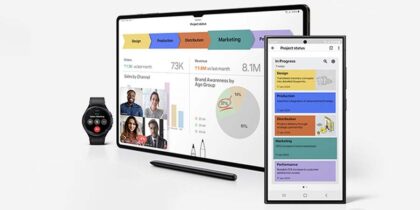The revolution of personalization and convenience underscores the transformation of banking industry operating models. The concentration on enhancing positive user experience has sparked the development and rollout of many innovations in 2016. More functional and user-friendly interfaces fortified by tighter, yet less intrusive, security integration are the drivers for improving customer engagement and usage growth. The burgeoning romance between non-traditional FinTech companies and tech-savvy millennials has awoken the proverbial sleeping giants of the banking industry. The most innovative banks bolstered their mobility offerings in 2016 to galvanize customer retention and stimulate growth.
Financial Wellness Apps
Aside from basic banking functions, innovative banks have diversified their offerings to help customers make better financial decisions, or at least help to avoid bad ones with financial wellness functions. Branch-less bank Ally Bank, a subsidiary of Ally Financial Inc., launched an app called Splurge Alert that uses geolocation to caution customers when they near a store where they have previously overspent, utilizing the user’s social network to chime in when a “danger zone” approaches. Without the costs restraints of physical locations, Ally is able to provide live web chat and 24/7 phone support. The USAA mobile app provides budgeting tools, spending and goal trackers to help customers grow their savings and implement more efficient money management. CBW Bank partnered with FinTech company Moven to offer debit cards that track, control and manage spending in real time through an amazingly simple and user-friendly interface. The combination has proven effective in “generating behavioral changes around spending” as 30 to 50 percent of the users are saving more money.
Robo-advisory Service Integration
While robo-advisors gained more acceptance by consumers, the big banks found ways to integrate them into existing operating models. Hybrid advisory services combine the personal interaction of a human financial advisor with the frictionless convenience of a robo-advisor. JPMorgan Chase is offering free robo-advisory services to its best wealth management clients. Wells Fargo teamed up with SigFig to develop its own robo-advisor to be marketed direct-to-consumer in 2017. The program caters to the millennial demographic to “establish a long-term pipeline for their full-service advisory business.” The next frontier is deeper AI integration with financial services. Currently, UBS offers personalized real-time portfolio analysis powered by IBM’s Watson.
Machine Learning Robo-workers
To the delight and curiosity of its walk-in customers, Japan’s Mizuho Bank rolled out physical robot concierges in many of its branches. The robots named “Nao” and “Pepper” are powered by IBM’s Watson AI-engine and speak Japanese, English and Chinese. The disarmingly cute robots greet walk-in customers by name and answer questions relating to over 100 products. Each successive engagement improves the accuracy of the conversations as machine language technology familiarizes itself with customer habits and preferences, much like a human concierge.
Finding Work-Life Balance in the Finance World.
Download the infographic to learn how your smartphone can help you work smarter — not harder. Download Now
Multipurpose Banking App Innovation
CitiBank has combined banking, wealth management and money transfer capabilities into a single banking app. Citi Mobile lets app users pay bills, deposit checks and transfer funds between both domestic and international accounts with five modes of identity authentication, including fingerprint, facial recognition, voice and traditional PIN/password. Citigold app users have one-click access to live financial managers and real-time trading capabilities for funds and equities. The 250-person in-house start-up, Citi FinTech, achieved in months what would normally take years to develop in the quest to fulfill their mandate to “build the mobile app of the future,” according to Interim COO Yolande Piazza.
Paving Long-term Results
The concentration on mobility is showing results with customer adaption and usage growth. Mobile banking has achieved mainstream status. According to the MEF Mobile Money Report, 61 percent of people use their mobile phones for banking.
Traditional banks have the advantage of history and long-term relationships in retaining baby boomers and Gen X-ers. However, the nomadic-natured millennials are becoming the largest demographic with Gen Y-ers turning of age this year. They demand innovation and are quick to switch over to the most innovative technologies.
In a report by Salesforce.com, 75 percent of millennials are now somewhat reliant on their mobile banking app compared to just 20 percent of Gen X-ers and a scant 13 percent of baby boomers. In fact, 27 percent of millennials are completely reliant on mobile banking and “can’t imagine a world” without it.
Banks have made good strides in meeting the needs of an ever expanding base of consumer personas in 2016. Improved digital delivery models, simpler user interfaces, stronger data security, real-time bank and non-bank fund transactions (i.e. peer-to-peer), cross product integration and deeply personalized AI assistants are just a sampling of enhancements to look forward to in the coming year. The most innovative banks will continue to concentrate on mobility enhancements with a laser focus on growing their millennial base of customers.
The Internet of Things (IoT) is elevating the banking experience. However, prioritizing IoT security is essential.








